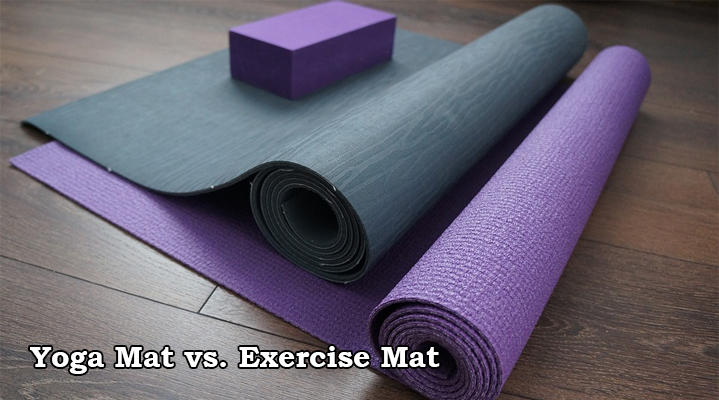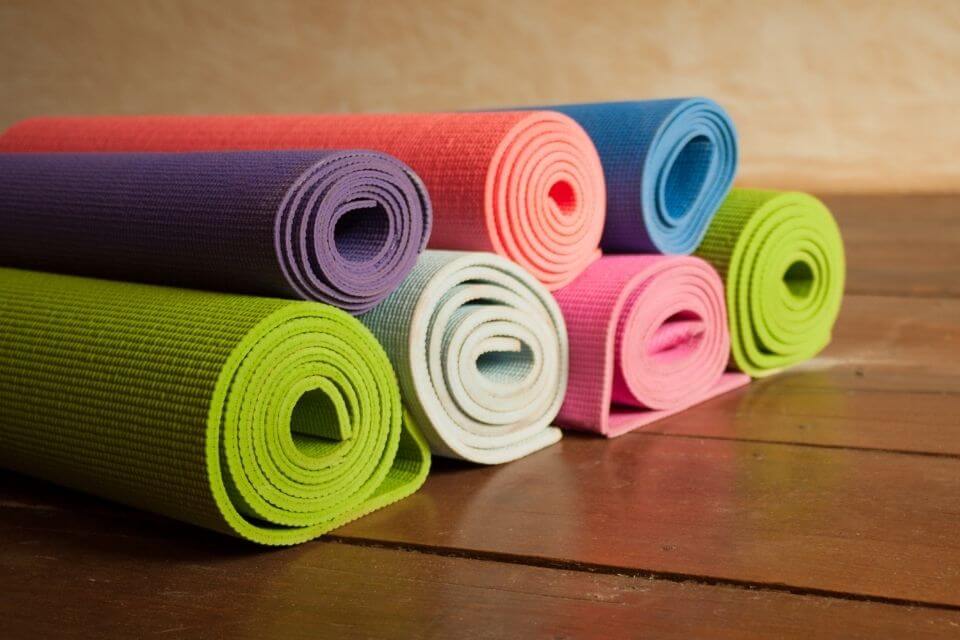If you’re wondering whether all exercise mats are the same, think again. All these mats that you can find online or in a sports store have different purposes. And although you might think that you can pick any mat, it would be best to use the proper mat so you’ll be more effective and comfortable during your workout.
Mats are generally used for cushion or support. Different workouts require different levels of support, and having the right mat will prevent you from getting yourself injured. So what’s the difference between a standard yoga mat and a general exercise mat? Here are a few key points.
Need a new yoga mat? Check out our complete guide on the best yoga mats.

Yoga Mats and Exercise Mats – Are They The Same?
With various options on the market for yoga mats and exercise mats, it’s understandable to be unsure about which is best for your specific needs. Are there any significant differences between a yoga mat and an exercise mat? Absolutely. There are different thicknesses, materials, and densities for yoga mats specifically.
What Are Differences Between A Yoga Mat And An Exercise Mat?
The differences between yoga mats and exercise mats are the thickness and firmness of the material. In most cases, exercise mats are thicker than yoga mats. On top of that, exercise mats can be either relatively firm (when used in a gym or workout area to provide some level of padding/cushioning for dropping barbells, kettlebells, and weights) or relatively soft when used for some bodyweight exercises. On the other hand, Yoga mats tend to be thinner and somewhere in the middle on a firmness scale. Yoga mats need to provide some cushion, but they also need to allow the person to properly feel the pose and feel stable or grounded when performing their poses.
Yoga Mats

Yoga mats are specially fabricated mats designed for low impact exercise. Yoga mats are generally thinner. They are about ¼ to 1 inch thick and have a non-slip surface. They are designed so that yogis can have a stable and non-slippery surface for doing their yoga poses. Yoga mats provide an excellent grip and cling firmly to most surfaces, allowing you to focus more on your balance instead of on your mat. This grip also helps prevent you from slipping or having yoga-related injuries. It may be beneficial for individuals who engage in workouts such as hot yoga.
Even though they are thinly cushioned, yoga mats provide just the right cushion needed for lower impact exercises. A thinner yoga mat also lends itself to easy clean-up and easy storage.
→ We have ranked the Manduka PROLite as our Best Yoga Mat.
Exercise Mats

On the other hand, exercise mats are typically used for general fitness activities and are found in most sports shops. Some people also refer to them as gym mats. They are thicker than yoga mats and are about 1 to 3 inches thick. The thickness of the mat protects your body and the floor and is ideal for floor-based exercises and bodyweight workouts. This also provides you with extra cushioning to support your body when sitting, lying down, or on your sides. These mats also help prevent any injury from high-impact workouts. These are generally different than the high-density rubber gym flooring that is used.
→ Gorilla Mats has a highly recommended exercise mat available (see at Amazon.com).
You can find these mats in a variety of materials and both online stores and sports shops. So whether you’re into yoga or general fitness activities, knowing the difference between these mats will help you get more out of your workout or yoga classes. Use the right mat and get the support that your body needs.
General fitness mats are thicker (and on average) half an inch thick, and are suited for floor-based exercise that involves sit-ups.
In conclusion, a yoga mat and an exercise mat are both great for working out, but there are some key differences. A yoga mat is denser and provides more cushioning, whereas an exercise mat is thinner and less forgiving. Additionally, a yoga mat typically has a non-slip surface to keep you from sliding around, while an exercise mat does not. So, which one should you choose? It really depends on what type of workout you plan to do.
